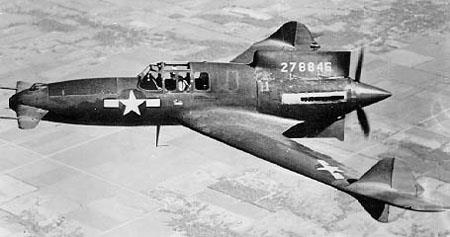A Glimpse into Aviation History: The Curtiss XP-55 Ascender
On July 19, 1942, the Curtiss XP-55 Ascender made its first flight, marking a significant moment in aviation history. This aircraft, known as the CW-24 during its development, was a prototype fighter designed during World War II. It was created in response to a proposal from the U.S. Army Air Corps called R-40C, which was issued on November 27, 1939. This proposal aimed to develop a fighter with enhanced performance, stronger armament, and better pilot visibility than existing models. It also encouraged the exploration of unconventional designs.
Revolutionary Design Features
In response to this challenge, Curtiss-Wright developed the XP-55 as a radical canard configuration aircraft. This meant that the horizontal stabilizer was positioned at the front of the aircraft, rather than the rear. Additionally, the vertical stabilizers were integrated into the wingtips, giving the plane a distinctive appearance. The aircraft featured a single engine, an Allison V-1710-95 that produced 1,275 horsepower, mounted at the back in a “pusher” configuration. This setup was quite unusual for the time and contributed to the XP-55’s unique design.
One of the most innovative features of the XP-55 was its propeller jettison system. This allowed the pilot to eject the propeller in case of an emergency, making it safer to bail out of the aircraft. This safety measure was ahead of its time and demonstrated the forward-thinking approach of the designers.
Performance and Capabilities
The XP-55 had impressive specifications for its era. It could reach a maximum speed of 390 miles per hour, had a range of 552 nautical miles, and could operate at a service ceiling of 34,600 feet. In terms of armament, it was equipped with four 0.50-caliber machine guns mounted in the nose, providing substantial firepower for a fighter aircraft.
Challenges and Cancellation
Despite its innovative design, the XP-55 faced several challenges during flight testing. It encountered engine problems and dangerous stall characteristics, which significantly impacted its performance. Ultimately, these issues meant that the XP-55 did not meet the expectations set by the U.S. Army Air Forces. As a result, the project was eventually canceled.
Only three prototypes of the XP-55 were ever built, and today, only one remains. The surviving aircraft is the XP-55 serial number 42-78846, which is currently on display at the Air Zoo in Kalamazoo, Michigan. This aircraft is on long-term loan from the Smithsonian National Air and Space Museum. While the XP-55 never entered operational service, it stands as a remarkable example of experimental aviation from the World War II era.
Legacy of Innovation
Although the XP-55 did not see active combat, it represents the bold design ambitions and engineering creativity of its time. Its unique features and unconventional approach to aircraft design highlight the spirit of innovation that characterized the aviation industry during the mid-20th century. The XP-55 serves as a reminder of the risks and rewards associated with pushing the boundaries of what was possible in aircraft development.
This aircraft, now preserved for future generations, continues to inspire those interested in the history of flight and the ingenuity of early aviators. It is a testament to the relentless pursuit of progress and the importance of experimentation in shaping the future of aviation.
